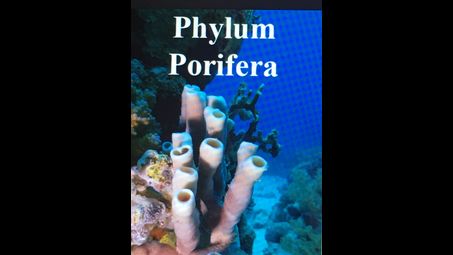I think most of these sponge species live in aquatic habitats. Such as cold oceans in the Arctic and Antarctic, but few live in warmer climates. About 150 of the sponge species live in warm climates, like tropical areas, while most live in cold areas.

What else can I help you with?
Where do sponges lives?
Sponges are aquatic animals that live in freshwater or marine environments. They can be found attached to rocks, reefs, or other hard surfaces on the ocean floor. Sponges are filter feeders, meaning they pump water through their bodies to collect food particles.
What are different animals in the sponge group?
Animals in the sponge group, known as phylum Porifera, include various species of sponges such as sea sponges, glass sponges, and demosponges. These animals are multicellular but lack true tissues and organs, with specialized cells performing different functions within their bodies. Sponges are filter feeders that live in aquatic environments, ranging from freshwater to marine habitats.
How long can sponges live?
30,000,000,000,000,000,000,000,000,000,000,000,000,000,000,000,000 years
How describe some freshwater ecosystems?
Freshwater ecosystems include rivers, lakes, ponds, and wetlands. They house a diverse array of aquatic species, such as fish, amphibians, and insects, and provide vital resources for surrounding terrestrial ecosystems. Threats to freshwater ecosystems include pollution, habitat destruction, and invasive species.
What eats sponges?
Some animals that eat sponges include sea slugs, sea stars, certain species of fish, and turtles. These organisms feed on sponges by either picking at them or by sucking them in through their mouth openings.
Where are sponges habitats?
Most sponges are marine, but there are some freshwater varieties
How does a brown tube sponges live?
Modern sponges are predominantly marine, with some species adapted to freshwater environments, ranging from the inter-tidal zone to depths of 6,000 meters (19,680 feet). Certain types of sponges are limited in the range of depths at which they are found. sponges are worldwide in their distribution, and range from waters of the polar regions to the tropical regions. sponges are most abundant in both numbers of individuals and species in warmer waters.
How many species of sponges are there?
approximately 9000 [ that feed on bacteria ] .
Do sponges live in fresh water or salt water?
Nearly all most all of the 5,000 known sponges are found in saltwater; however, 150 species live in freshwater.
How many different species of sponges are there?
Type your answer here... 55
What species are sponges?
Sponges are animals of the phylum Porifera.
Is the sponge the only animal in the porifera plylum?
There are many different kinds of sponges. Every time you see a sponge with a different shape and color, that is a different species. There are thousands of different species of sponges, tube sponges, encrusting sponges, demosponges, etc. But yes, Porifera only includes sponges. So sponges are the only animals in the Porifera.
How many species of freshwater fish are there?
aproximently 27,400
Sponges can be found in what habitats?
Modern sponges are predominantly marine, with some 150 species adapted to freshwater environments. Their habitats range from the inter-tidal zone to depths of 6,000 metres (19,680 feet). Certain types of sponges are limited in the range of depths at which they are found. Sponges are worldwide in their distribution, and range from waters of the polar regions to the tropical regions. Sponges are most abundant in both numbers of individuals and species in warmer waters.For the source and more detailed information concerning this subject, click on the related links section (Answers.com) indicated below.
How do freshwater sponges survive the winter in colder climates?
Magic. Heat.
What kind of symmetry do sponges exhibit?
Sponges are asymmetrical, although a few species have nearly radial symmetry.
What are natural sponges?
what is the answer to what color are natural sponges? Sponges come in many different colours; they can range from white to yellow, to pink, orange, blue, and an array of other colours. It all depends on the species.
